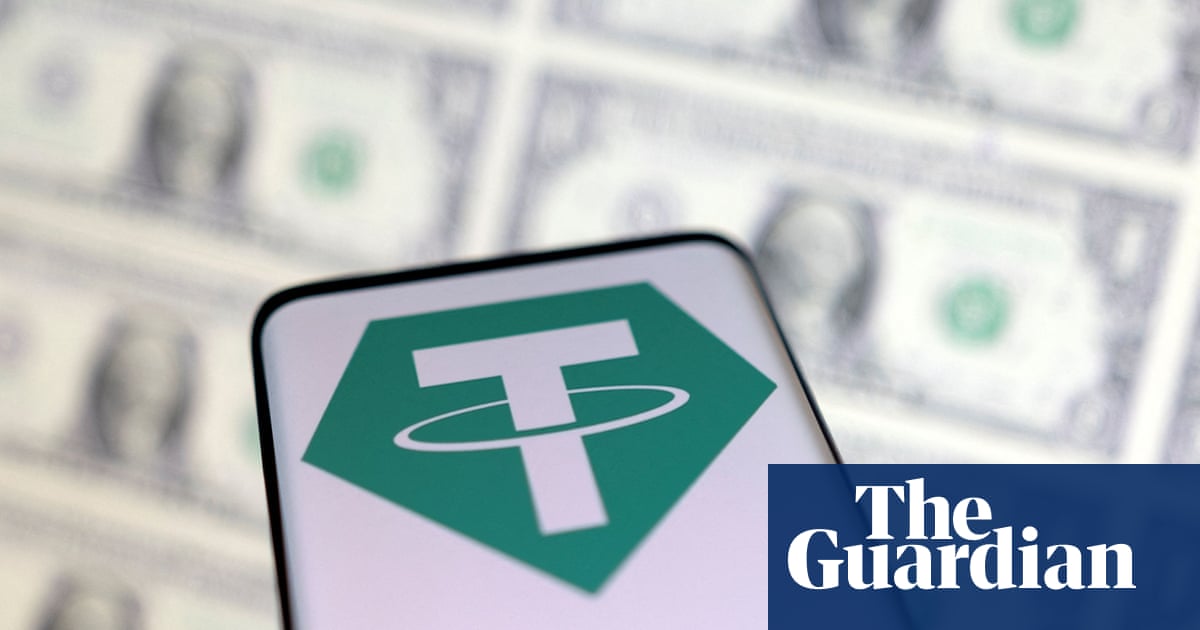Pace of withdrawals in May means ‘stablecoin’ company effectively dealing with slow-motion bank run
Tether, the multibillion dollar “stablecoin” that functions as the largest bank in the cryptocurrency economy, has paid out $10bn (£8bn) in withdrawals since the crypto crash started in early May.
The pace of withdrawals means the company is effectively dealing with a slow-motion bank run, as depositors seek to move their cash to more heavily regulated stablecoins.
According to public blockchain records, $1bn of tether was redeemed – with the cryptocurrency handed back to the company and destroyed as part of the withdrawal process – just after midnight on Saturday.
$1.5bn had already been redeemed the same way three days earlier. The total withdrawn is now, allowing for minor fluctuations in the stablecoin’s peg, about one-eighth of the entire reserves of the company.
The latest redemption comes after Tether published its latest statement of reserves, which show that as of late March the company had backed user deposits with a mixture of US Treasury bills, bonds in other private companies, and about $5bn in miscellaneous “other investments”, including in other cryptocurrency enterprises.
However, some have questioned whether the accounts are as reassuring for depositors as they appear. If the company’s investments in cryptocurrency enterprises fell in value during the market crash, then it may have struggled to match customer deposits, one fintech analyst has argued.
Like all stablecoins, the tether currency is supposed to always be worth a fixed amount – in this case, one US dollar. It achieves that, the company says, by maintaining a large reserve of stable assets: while retail investors can buy or sell tether on cryptocurrency exchanges, institutional investors can also simply pay money directly to Tether to receive newly minted tokens, and can return the tokens to the company in exchange for cash.
Initially, Tether claimed its reserves were backed one to one with US dollars. However, after an investigation by the New York attorney general, the company admitted that was not always the case and said that its currency was simply backed by “Tether’s reserves”. As part of that settlement, it agreed to publish a quarterly statement that detailed what those reserves comprise.
The latest statement, dated before the recent crypto crash, shows Tether storing about $20bn of its cash in commercial paper, $7bn in money market funds and nearly $40bn in US Treasury bills, all of which are generally stable investments. Another $7bn, however, is stored in “corporate bonds, funds and precious metals”, and “other investments (including digital tokens)”. As a portion of Tether’s reserves, it is comparably small, but it opens the company up to the risk of breaking its promise to be “fully backed” should a large market fluctuation occur.
That may already have happened, said Patrick McKenzie, a fintech commentator who works for the payments company Stripe. According to Tether’s company accounts, it has $162m more in reserves than the total outstanding tokens it has issued, McKenzie noted. But, to list just one public investment from the company, some of the digital tokens Tether holds are those of crypto investment platform Celsius.
“Tether has invested $62.8m of the reserves into Celsius network … Celsius is in freefall due to the current market dislocation; the value of their native token is down by over 86%,” said McKenzie, adding: “Clearly, that investment has suffered more than $20m in impairment. Impairment of 1% of one line item on their balance sheet ate more than 10% of their equity.”
In a statement, Paolo Ardoino, Tether’s chief technology officer, said: “Tether has maintained its stability through multiple black swan events and highly volatile market conditions and, even in its darkest days, Tether has never once failed to honour a redemption request from any of its verified customers.
“This latest attestation further highlights that tether is fully backed and that the composition of its reserves is strong, conservative, and liquid.”
This article was amended on 23 May 2022 to refer more accurately to Tether’s latest statement of reserves rather than its audited accounts, as they have not been audited.
Author
Administraroot


